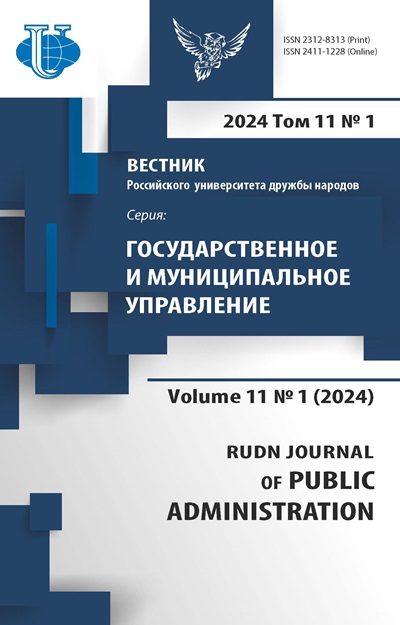The realization of international projects in science and technology: Australian-Chinese experience
- Authors: Katkova EY.1
-
Affiliations:
- Peoples’ Friendship University of Russia (RUDN University)
- Issue: Vol 4, No 4 (2017)
- Pages: 355-365
- Section: Foreign experience of public administration
- URL: https://journals.rudn.ru/public-administration/article/view/18200
- DOI: https://doi.org/10.22363/2312-8313-2017-4-4-355-365
Cite item
Full Text
Abstract
The research contents the analysis of the experience of the collaboration of Australia and China in science and innovations. The main directions of the development of international cooperation in the sphere of science and innovations are studied including the focus on addressing global problems and achieving sustainable development goals, the revitalization of cooperation in international relations. As the main contradiction of the development of science and technology it is highlighted from one side the desire of countries to strengthen the national sphere of science, from another - the international character of the most important research projects. The work analyses the structure of the sphere of science in Australia and China and the history of the collaboration of these two countries. It is mentioned that the development of scientific and technical cooperation leaded the development of the contacts in education and the revitalization of the Chinese investment in Australia. The research of the experience of the realization of cooperative Australian-Chinese projects made it possible to conclude that the cooperation of these two countries is based on the mutual complementation - China has resources and is ready to invest in the development of science and Australia is the country with the developed sphere of science. It determines the growth of the number of their cooperative projects in science and technology.
About the authors
E Yu Katkova
Peoples’ Friendship University of Russia (RUDN University)
Author for correspondence.
Email: 1042160016@pfur.ru
-
6 Miklukho-Maklaya St., Moscow, Russia, 117198References
- Shankar R. Globalization and Science: A Speeded-Up Virtuous Cycle // YaleGlobal Online. URL: https://yaleglobal.yale.edu/content/globalization-and-science-speededvirtuous-cycle (accessed: 16.12.2017).
- Veugelers R. China is the world’s new science and technology powerhouse // Bruegel. URL: http://bruegel.org/2017/08/china-is-the-worlds-new-science-and-technology-power house/ (accessed: 16.12.2017).
- Xie Y., Zhang C., Lai Q. China’s rise as a major contributor to science and technology // Proceedings of the National Academy of Sciences. 2014. Vol. 111. № 26. P. 9437–9442. URL: http://www.pnas.org/content/111/26/9437.full (accessed: 23.12.2017).
- Vinogradov A. Kitayskaya model’ modernizatsii. Poiski novoy identichnosti. M.: NOFMO, 2008.
- Aleksandrova M. Ekonomika Severo-Vostochnogo Kitaya i sovetskaya pomoshch’ KNR v 50-h godah XX veka // Kitay v mirovoy i regional’noy politike. Istoriya i sovremennost’. M.: IDV RAN, 2010. S. 326–348.
- Vinogradov A., Salitskiy A., Salitskaya E.A. Nauka i tekhnika v Kitae: sostoyavshayasya modernizatsiya // Vestnik Rossiyskoy akademii nauk. 2016. Tom 86. № 2. P. 152–160.
- Fingar T., Simon D., Suttmeier R., Orleans L. Science & Technology in China // Bulletin of the Atomic Scientists. 1984. № 40:8. P. 1s–15s.
- Kitching B. Australia – China relations in science and technology // Asian Studies Review. 1995. № 18:3. P. 27–46.
- 张世专. 从澳大利亚科学国际化战略 看中澳科技合作 [CHzhan SHichzhuan. Avstraliya i Kitay Kitaysko-avstraliyskoe sotrudnichestvo v oblasti nauki i tekhniki v ramkah avstraliyskoy strategii internatsionalizatsii nauki] // Shandong Academy of Sciences. URL: http://www.sdas.org/u/cms/www/201507/24113708xu3i.pdf (accessed: 23.12.2017).
















